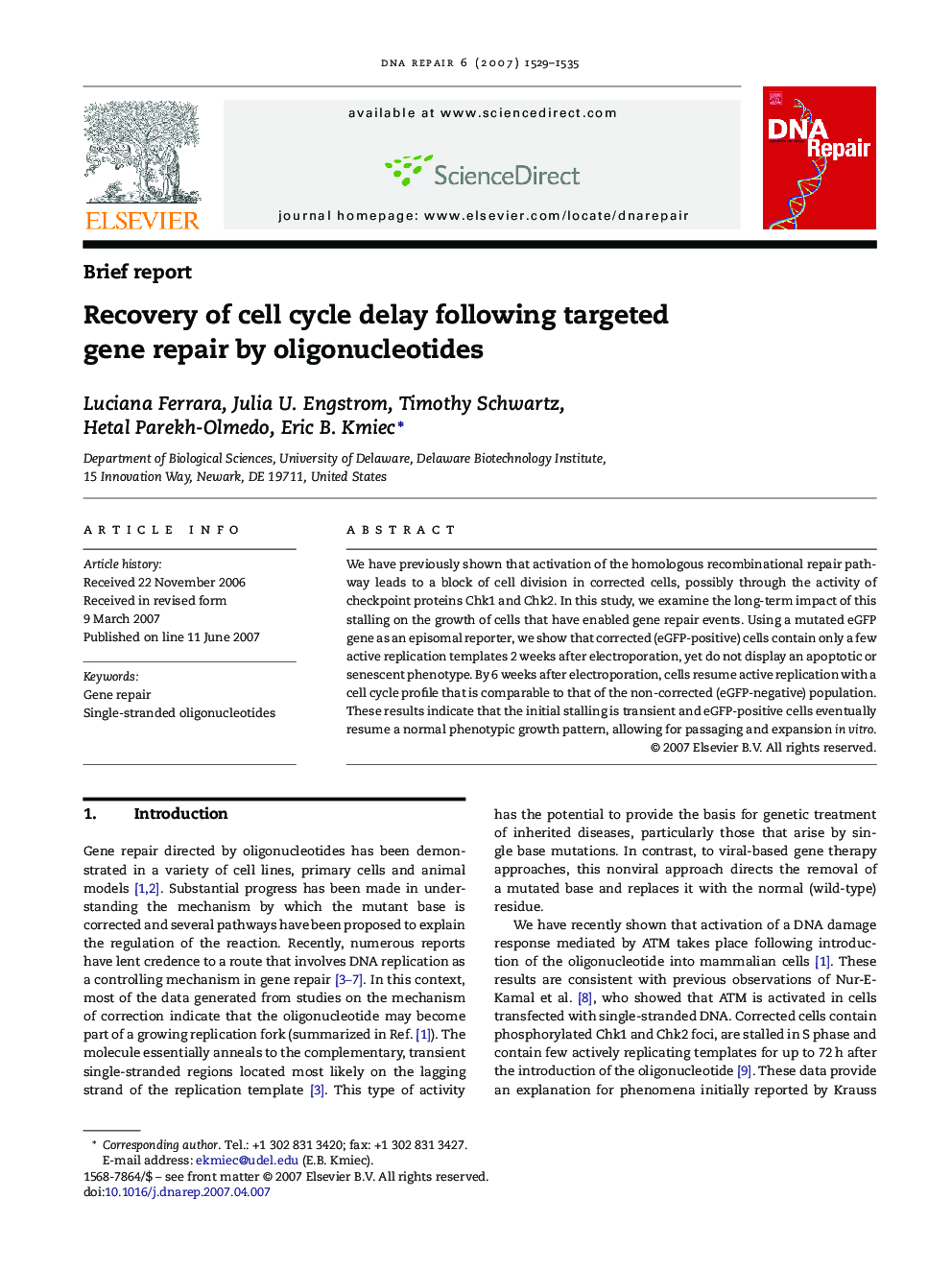| Article ID | Journal | Published Year | Pages | File Type |
|---|---|---|---|---|
| 1981336 | DNA Repair | 2007 | 7 Pages |
We have previously shown that activation of the homologous recombinational repair pathway leads to a block of cell division in corrected cells, possibly through the activity of checkpoint proteins Chk1 and Chk2. In this study, we examine the long-term impact of this stalling on the growth of cells that have enabled gene repair events. Using a mutated eGFP gene as an episomal reporter, we show that corrected (eGFP-positive) cells contain only a few active replication templates 2 weeks after electroporation, yet do not display an apoptotic or senescent phenotype. By 6 weeks after electroporation, cells resume active replication with a cell cycle profile that is comparable to that of the non-corrected (eGFP-negative) population. These results indicate that the initial stalling is transient and eGFP-positive cells eventually resume a normal phenotypic growth pattern, allowing for passaging and expansion in vitro.
